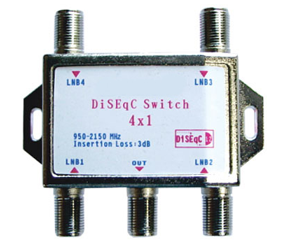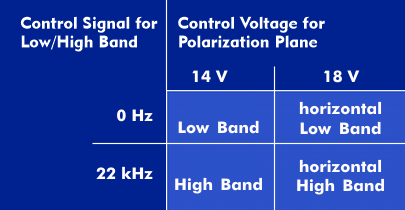digital satellite equipment control (DiSEqC)
Digital Satellite Equipment Control (DiSEqC) is a method with which LNB converters, multiswitches and antenna motors can be switched and controlled. With DiSEqC technology, the satellite antenna can be rotated to different satellites. In addition, the LNB converter can be switched via control signals in the reception frequency bands for analog TV and digital TV and in the polarization planes.
The DiSEqC control command is controlled from the set-top box, satellite or digital receiver and can be used equally for analog and digital programs. Switching takes place via a burst that is sent from the set-top box to the antenna switch via the antenna cable
The different DiSEqC variants
There are various DiSEqC versions (1.0, 1.1, 1.2, 1.3, 2.0, 2.1 and 3.0), which differ in control and communication with satellite receiving equipment.
DiSEqC 1.0 is the most common version with one master(receiver) and several slaves (multiswitches, LNBs), where the master controls the slaves unidirectionally. With this version, up to four satellite positions can be controlled. In addition, the 14/18 V DC voltage can be used to switch the two polarization levels and, via the 22 kHz control signal, the low and high band frequency bands for analog TV and digital TV.
DiSEqC 1.1 corresponds to version 1.0, but offers four additional switching options. This means that 64 different satellite positions can be selected in this version.
In version DiSEqC 1.2, the satellite positions can be stored by the motors of the satellite reception system and can be called up and controlled from the receiver. This version is supported by the automatic satellite localization, called USALS, which is also used in DiSEqC 1.3.
In DiSEqC 2.0 and the other 2. variants, the communication between master and slaves is bidirectional. Information about the number of connected LNBs is sent via the return channel. In this version, the configuration of the receiving equipment can be detected and switched. Version 2.0 is also suitable for rotatable antenna systems. The advantage of DiSEqC 2.1 is the reception of up to 64 satellites for analog TV and digital TV. 2.1 can address four additional multiswitches.
DiSEqC 3.0 is for Unicable with up to 30 participants. It offers additional programming options and bidirectional communication.


